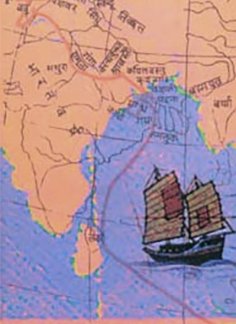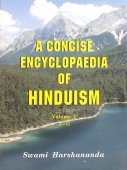Slavery: 1 definition
Introduction:
Slavery means something in the history of ancient India. If you want to know the exact meaning, history, etymology or English translation of this term then check out the descriptions on this page. Add your comment or reference to a book if you want to contribute to this summary article.
India history and geography
Source: archive.org: Rajatarangini (Ranjit Sitaram Pandit) (history)Slavery was prohibited according to the ancient law of the Aryas.—The picture drawn by Kalhana of the political and social life in Kashmir is not unlike Finlay’s picture of the Byzantine Empire minus the slaves and eunuchs. Up to the middle ages, when Aryan rule came to an end with the defeat of Prithvi Raj Chauhan of Delhi—about half a century after Kalhana wrote his poem—slavery had not existed in India in spite of a socio-religious system of which the natural inequality of man seemed to be the pivot. The law of the Aryas prohibited slavery and the injunction had already been emphasized in the Arthasastra—an authoritative work on political science of the 4th century B.C.

The history of India traces the identification of countries, villages, towns and other regions of India, as well as mythology, zoology, royal dynasties, rulers, tribes, local festivities and traditions and regional languages. Ancient India enjoyed religious freedom and encourages the path of Dharma, a concept common to Buddhism, Hinduism, and Jainism.
See also (Relevant definitions)
Full-text (+67): Dasya, Parapreshyatva, Dasata, Bhaujishya, Bandagi, Paratantrya, Dasabhava, Dasavya, Dasatva, Adhinata, Bhujishya, Dasapratha, Dasatta, Tottugodu, Tacikam, Daasatv, Tacattuvam, Mokshadayaka, Adiyuliga, Toltutana.
Relevant text
Search found 69 books and stories containing Slavery; (plurals include: Slaveries). You can also click to the full overview containing English textual excerpts. Below are direct links for the most relevant articles:
Human Reference < [April - June 1977]
Mrs. Stowe’s ‘Uncle Tom’s Cabin’ < [October – December, 1997]
The Rise in Human Violence < [April – June, 2004]
Yajnavalkya-smriti (Vyavaharadhyaya)—Critical study (by Kalita Nabanita)
Chapter 3.6c - Slavery in India < [Chapter 3 - The Social Aspect Depicted in the Vyavahārādhyāya]
Chapter 5.12 - Laws Relating to Breach of Contract of Service < [Chapter 5 - Vyavahārādhyāya and the Modern Indian Laws]
Chapter 3.6 - Social Issues (Introduction) < [Chapter 3 - The Social Aspect Depicted in the Vyavahārādhyāya]
Manusmriti with the Commentary of Medhatithi (by Ganganatha Jha)
Verse 8.415 < [Section XLVIII - Laws relating to Civic Misdemeanours]
Verse 8.414 < [Section XLVIII - Laws relating to Civic Misdemeanours]
Verse 8.410 < [Section XLVIII - Laws relating to Civic Misdemeanours]
Prediction Based On Physical Traits Of Women < [Astrology In Garuda Purana]
Parables of Rama (by Swami Rama Tirtha)
Story 122 - The Result of Dependence on Others < [Chapter XVII - Self Reliance]
Story 115 - God-head, Our Birth Right < [Chapter XVI - Self Realization]
Story 42 - Search due to Ignorance < [Chapter VI - Ignorance]
Yoga-sutras (Ancient and Modern Interpretations) (by Makarand Gopal Newalkar)
Sūtra 2.5 < [Book II - Sādhana-pāda]
Related products
